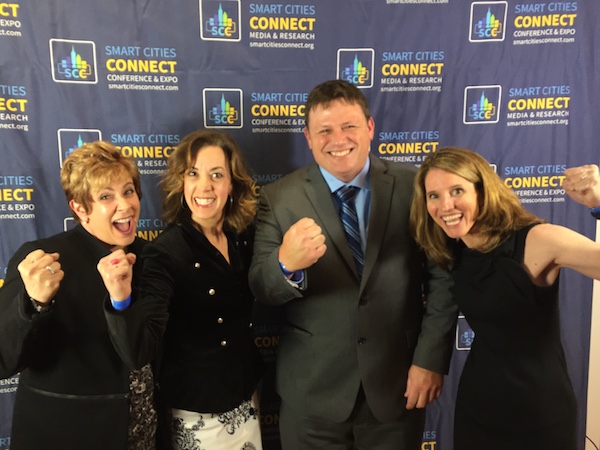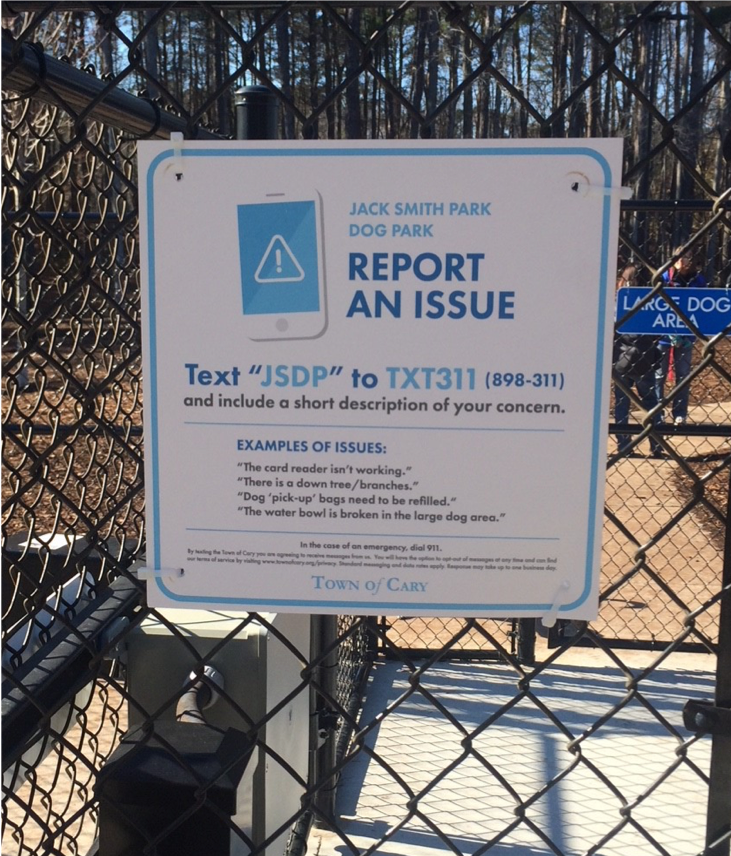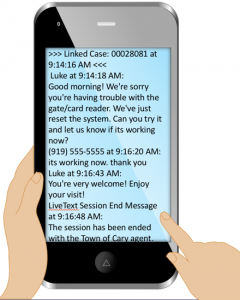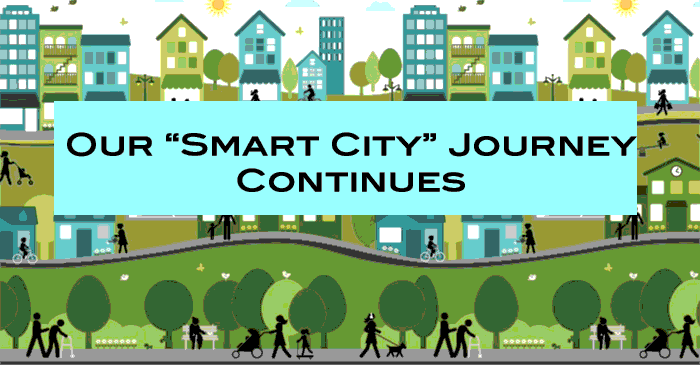Cary has been in the news quite a bit lately about our Smart Cities initiatives. It’s great to see how forward thinking our Town has been as we find new and exciting ways to cost-effectively deliver new services, streamline current capabilities, and improve our quality of life. I blogged about this last year – and at the time, we were at the beginning of our journey. So, how far have we come?
Smart Cities Recap
Why do we want to be looking at “smart city” capabilities?
Because the opportunity of utilizing smart technologies and data analysis is that it allows us to optimize our town functions while also driving economic growth. And all of this is with the goal of improving the quality of life for our citizens.
Last year, Cary took on this idea full steam, creating a simulated Smart City Campus, partnering with vendors, local universities, our Town volunteer boards and smart city organizations to help us as we moved forward. Throughout all of these efforts, Cary garnered a few awards:
-
- Smart Cities Dive: Rising Star Award (2017)
- Smart Cities Connect, Smart 50 Award: for Cary’s Simulated Smart City (2017)
- and the Smart Cities Council 2018 Readiness Grant.
- This last award allowed us to have a workshop in Cary, where we recently held a meeting at SAS of more than 80 folks to plan additional ways to make data-informed decisions, and ensure greater citizen engagement and transparency. Our all day workshop session focused on 3 main topics:
- Smart, safe mobility and transportation
- Healthy communities
- Integrated data infrastructure
-

Cary Wins Smart 50 Award
What’s New and What’s Next?
Recently, I had the pleasure of presenting how Cary envisions utilizing technology for Public Good at Interop with our amazing CIO, Nicole Raimundo, have I mentioned she was NC Public Sector CIO of the Year? Just sayin.
We had the opportunity to brag a bit about Cary, as well as share our vision and journey – from our two different perspectives – of an elected and a CIO. It was great to hear from other CIOs and public servants about their own process, and allowed us all to learn from each other.
We had a little video – to kick things off, and get people thinking. What are some of the technologies that are in use, or could be in use, to help us in our daily lives? What would that “Day in the Life” look like?
-
COOL TECHNOLOGY IN USE
- I’ve talked about some of the great innovations in use at the Town, or being piloted. WAZE is already being used by many folks, and our Alexa app is in its 2nd Beta. (I hope it will be launched soon!)
- But one of the most exciting capabilities and one that gained a ton of interest from our Interop audience is a simple texting application.
- It’s called TXT311. And if you watched the above video, you might have seen a bit about it.
- So, here’s the scenario:
- It’s Saturday, and you pack up the dog and the kids and head out to one of our great dog parks with a plan to wear out the dog, and the kids. Beautiful day – perfect weather, ready for fun.

Sad dog eyes…
- And, you get to the gate at the Dog Park – and it’s stuck. Your card won’t work. The gate won’t open. No one is around, and it’s a Saturday.
- I mean, c’mon. Look at these eyes —- how do you say “no” to that?
- Who do you call? (No, not Ghost Busters.)
Well, you don’t have to CALL anyone.
Hanging near the gate is this sign – directing you to use TXT311, to let Town of Cary staff know about an issue.

TXT311 at Jack Smith Dog Park

Texting with the Town
So, you send out the text, and voila! You get a response, and Luke is on the other end, responding to your request.
(This is the text from a live feed, but I removed the phone number of the caller.)
On the town side, we’re able to do something quick, and responsive, using a device that most people have with them. In fact, studies have shown that texting is the #1 preferred method for support calls, it’s also the most used data service in the world. (Nielsen) and 89% of consumers want to use messaging to communicate with businesses. (Twilio)
-
WHY TXT311?
- So, why is it called TXT311? Well, it’s kinda brilliant. It’s a texting service (also called SMS which is short for Short Message Service.) With SMS, you can send a message of up to 160 characters to another device. (In case you didn’t know, that’s why originally Twitter was limiting messages to 160 characters, so that folks that used SMS could leverage the service.)
- Anyway, the first part is TXT – meaning text.
The 2nd part is 311. What’s 311? 3-1-1 is a numeric code set aside in telephone systems for non-emergency connections for municipalities. Just like 9-1-1 is set aside for emergencies and first responders, and 6-1-1 is set aside for Telecommunication systems – 3-1-1 is set aside for cities. It’s also become the term now used for all city related non-emergency call systems and centers. Think of it like a hotline to your town, and you don’t have to remember the 919-460-xxxx number.
The first 311 system was launched in 1996, and since then the term has been used to refer to a number of connections between citizens and their local governments. It’s also helped to drive more process improvements inside of government, because the focus continues to be on the citizen – and silos make it harder to respond quickly and efficiently. So, now you get it! TXT311 – it’s Cary’s first real use of the 311 term out in the wild, and it’s already helping our citizens.
This is what Smart Cities is all about. To leverage innovative ideas, technology and people – all coming together to make Cary the remarkable place it is to live, work, own a business, raise a family —- and to play. At a dog park, if you want.
- _________________________________
- I’ll be talking about other technologies in upcoming blog posts – I hope you’ll stay tuned.And yes, that’s my dog, Luna. (She’s an Irish Doodle and loves a good Dog Park.)
Oh, and if you want to watch Councilmember Jennifer Robinson and I talk about this a bit more, check out our Cary Matters video, below.

2 Responses to Our Smart City Journey